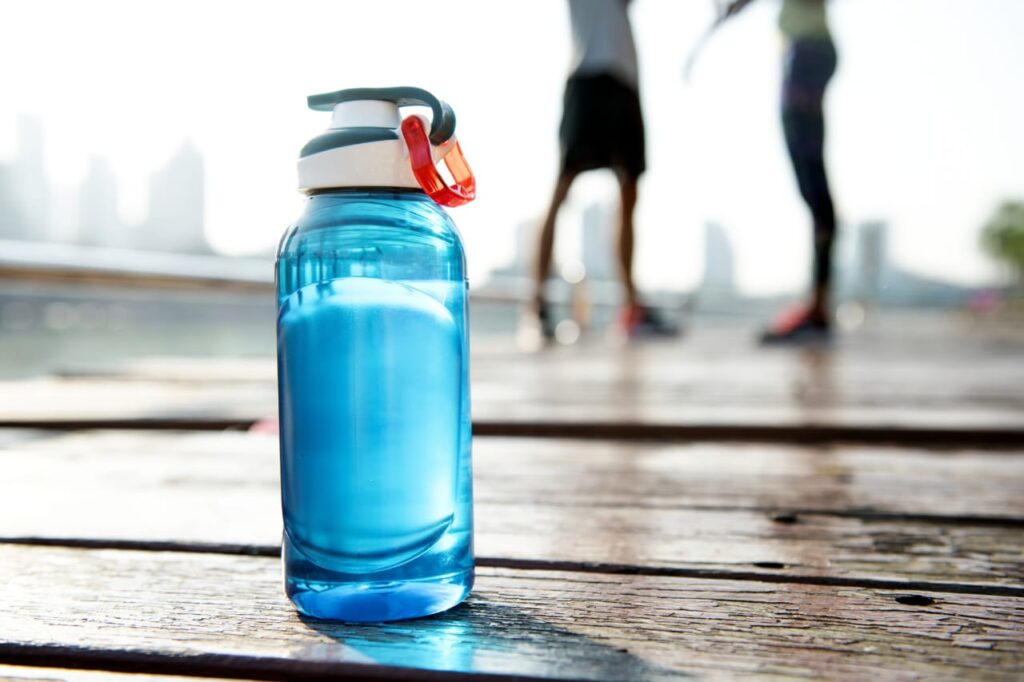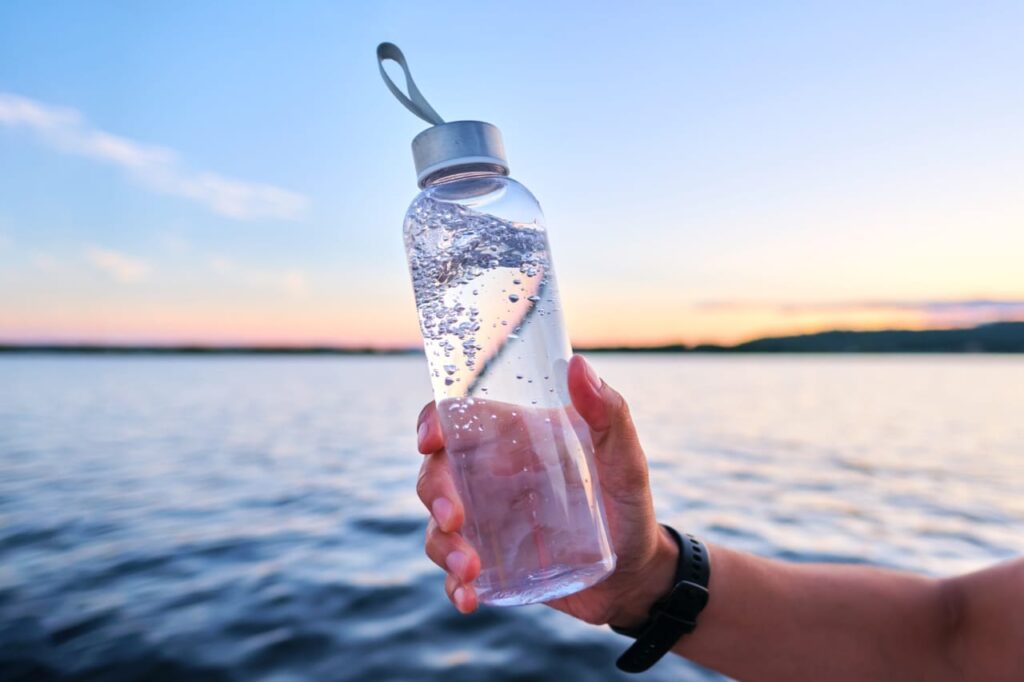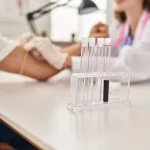Plastic is found in all areas of consumer life, including foods and beverages. Consumer Reports recently tested approximately 100 foods and found that two types of chemicals used in plastic are present in a wide range of packaged items. These findings concern many because researchers have found that particular chemicals can cause health effects in humans.
The Dangers of Chemicals in Plastics
Bisphenols and phthalates can disrupt the endocrine and hormone systems in men and women. Researchers also found that these chemicals can cause neurodevelopmental issues, metabolic disorders, and reproductive problems in humans. Another study found that exposure to plastic-related chemicals led to approximately $250 billion in healthcare costs in America in one year.
People can eliminate this concern by purchasing The Berkey products, filtering their water, and avoiding plastic water bottles that contain these chemicals. Individuals must understand that where they put their filtered water is as vital as the water itself. These are only two substances mentioned above that are found in plastic. They are just the most well-known.
Plastic contains thousands of chemicals, many associated with health hazards. Sadly, many plastics have yet to be studied or tested to see if they’re safe for human use. Microplastics may break off from a plastic water bottle and end up in a person’s food or drinking water. These microplastics may also leach chemicals and present an entirely new set of risks. The problem is so widespread that the Centers for Disease Control and Prevention report every person has some plastic chemicals in them.
Health Effects
Why should humans be concerned about the chemicals found in plastic? These chemicals may include neurotoxic chemicals and ones that disrupt the endocrine system. In addition, they may contain carcinogens. Some substances may directly damage organs in the body and result in disease with continued exposure.
Other chemicals interfere with biological processes, particularly those involving hormones. They do so by targeting the biological receptors that hormones do in the human body. Health issues that may occur with repeated exposure to these chemicals include low birth weight or preterm birth, impaired fertility, increased breast cancer risk, and brain development issues in toddlers and young children.
Medical experts refer to these chemicals as endocrine disruptors. People don’t need high-dose exposure to these chemicals to see disruptions in their endocrine systems. Low doses can have similar long-term effects.
Individuals exposed to these endocrine disruptors are at higher risk of obesity, diabetes, other metabolic disorders, reproductive problems, and neurodevelopmental issues. Pregnant women and young children are most at risk of being impacted. They are more susceptible to minute changes in hormone levels because their bodies are still developing. Exposure at a young age to brominated flame retardants found in plastics and other consumer products leads to brain damage. A child may have a reduced IQ, ADHD, or a shortened attention span.
Other chemicals in plastic can increase a person’s risk of specific cancers. People living near a plastic production facility have a higher risk of leukemia, lymphoma, lung cancer, and other health issues such as stroke. The concern is not one-time exposure but repeated exposure to these chemicals, which increases a person’s risk for many diseases.
A Clearer Picture
Researchers have identified many chemicals in drinking water. However, they have yet to understand the impact of every chemical a person might be exposed to, including the chemicals in plastic water bottles. What they do know is that plastic chemicals appear to impact individuals and animals directly. Researchers are taking the gathered data and clarifying how certain chemicals can lead to diseases in both populations.
Researchers can agree that other chemicals found in plastics are potentially problematic. Additional studies must be done to determine their effect on humans. When conducting this research, scientists must also examine microplastics and how they may carry toxic chemicals into the human body. They have already determined that microplastic exposure can affect male fertility and lead to colon or gut cancer. They don’t know why microplastic exposure leads to these diseases, but there is an increased risk.
Plastic Consumption

Humans wouldn’t willingly eat or drink plastic. However, they may take in micro and nano plastics when eating or drinking. This exposure to plastic can happen at any stage in the product lifestyle, from production to disposal.
Manufacturers add thousands of chemicals to plastics to make them more flexible, stable, or fire-resistant. These chemicals do not bind tightly to the plastic but stick to it. When the plastic gets warm, the chemicals leach into the user.
Fats and oils can also lead to the release of these chemicals. A person may clean a dish to avoid getting sick, only to find that they have released chemicals that are now making them ill. Everyday items, including a person’s clothing, can contain plastic that might make them sick.
When a person uses any item made of plastic, they are exposing this item to wear and tear. This wear and tear may lead to the release of nano- and microplastics. When these plastics break off, they can end up in a person’s food or drink. The chemicals may also end up in the air a person breathes. A plastic water bottle could contain hundreds of thousands of nano plastic fragments that are small enough to enter the bloodstream and cross protective barriers.
Using a reusable water bottle also helps to reduce a person’s exposure to plastic. Today, most plastic isn’t recycled. It ends up in a landfill or as litter. When this plastic breaks down, it releases chemicals and microplastics. If plastic is incinerated, it leads to harmful air pollution. In addition, microplastics may end up in water supplies. As plastic production increases, this exposure will only increase as well.
Regulations Won’t Help
Countless individuals look to the government to regulate the chemicals found in plastics. Sadly, the government is not doing its job. Bisphenols and phthalates are commonly found in foods and can harm human health. The government knows these chemicals are present in foods because United States regulators have studied BPA. There are yet to be steps taken to protect humans from exposure to these harmful substances, so consumers must do this independently.
The United States Food and Drug Administration has established thresholds for acceptable levels of BPA in food. Researchers, however, need to consider the latest studies, which show that lower exposure levels can harm humans. The regulators use conventional toxicological assessments when determining which dose is acutely poisonous to humans. They need to consider that lower exposure levels can do just as much harm with time.
Europe is ahead of the United States in this area. Government officials overseas are imposing stricter limits on BPA in food and beverages to better protect consumers from harm caused by micro and nano plastics. The problem is that this only addresses one or two common chemicals. Researchers must consider that thousands of other plastic substances used for food and beverage packaging may be problematic. Regulators across the globe must set stricter limits on the use of hazardous chemicals and plastic products. Doing so will benefit human health overall.
The Future of Plastics
Global limits must be placed on plastic production to minimize harm to human health. The toxic chemicals found in these plastics are only one concern. Another issue is that some plastics are made with many different substances, making them impossible to recycle. Single-use items, including disposable plastic water bottles, are also of concern. When consumers stop using these problematic plastic items, the focus can turn to valuable and essential plastics needed for aerospace, medicine, and other critical industries.
Ultimately, humans are responsible for their health. They must control as many factors as possible to reduce their illness and disease risk. While many things are beyond their control, their choice of water bottles is not. Countless individuals are investing in Berkey products to benefit from filtered water that contains fewer contaminants. They love that the Berkey water filter bottle is made with BPA-free plastic and won’t harm their health. They will get clean, filtered water that doesn’t contain harmful plastics found in many other water containers.
Why Filtered Water?
Water filtration systems are needed today to remove unwanted impurities from drinking water. This helps minimize the adverse health effects of consuming dirty or contaminated water. Not only is the water safe to drink, but it tastes and smells better. People will want to drink more water when it is appealing. Minerals and other valuable substances humans need remain in the water, and a reusable water container benefits the environment. Once people learn how dangerous disposable water bottles are, they want to invest in a quality BPA-free water bottle. Berkey offers BPA-free bottles, and the company also offers water filtration systems.
When people drink filtered water from a BPA-free container, they improve their health and overall well-being. Filtered water is beneficial, but the effects are muted when drinking from a plastic container laden with chemicals. Berkey products are designed to allow humans to consume clean water free of chemicals and other contaminants. Learn more about this company and its products today.







